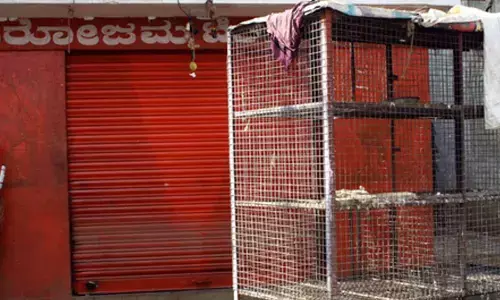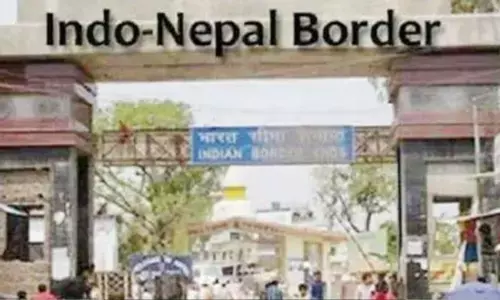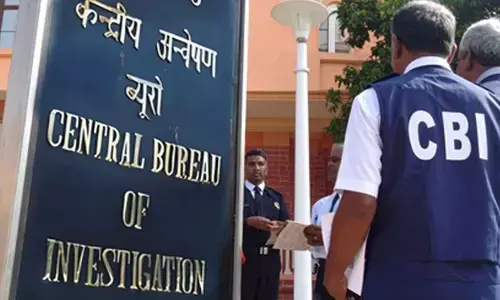Disinvestment process needs to be credible, transparent

Disinvestment process needs to be credible, transparent
The public sector disinvestment process seems to be on the verge of revival.
The public sector disinvestment process seems to be on the verge of revival. The news that the government is inviting expressions of interest for strategic sale of the Rashtriya Ispat Nigam Limited (RINL) indicates the process is now back on track. Little progress had been made after the sale of Air India last year and it looked as if meeting the budgetary target for disinvestment receipts in the current fiscal would be a far cry. In fact, these annual targets have not been met now for several years. This had prompted the government to reduce the expectation from Rs 1.75 lakh crore in 2021-22 to Rs 65000 crore in 2022-23. It is now likely, judging by media reports, that this may be brought down even further to a modest Rs 35000 crore for the next fiscal. In case the RINL divestment process is launched by the end of January 2023, it is possible the current fiscal could end with a larger inflow of funds under this heading. RINL, or Vizag Steel, as it is also called, already appears to have about seven interested buyers. These include Tata Steel, Adani group and JSW Steel. It must be recalled that after the sale of Air India, it was widely expected that BPCL would be the next major enterprise to be put up for strategic sale. This did not happen largely due to the change in the geopolitical scenario. With global oil markets showing extreme volatility after the Ukraine war began, there was less appetite for making investments in the fossil fuels sector.
The process of divesting government's equity stake also began in several other companies like Container Corporation of India, Shipping Corporation of India and IDBI. But these reportedly will only be finalised in the next fiscal. It is possible, however, that receipts from divesting the entire government equity share in Hindustan Zinc Limited (HZL) may come in during the current year. This could potentially boost the divestment kitty by about Rs. 38000 crore.
The plans to privatise two public sector banks and an insurance company similarly seem to be moving at a slow pace. But Finance Minister Nirmala Sitharaman reassured recently that strategic disinvestment of the Life Insurance Corporation had taken place through its initial public offer (IPO). And the next step, she indicated, was to go ahead with bank privatisation.
Even so, the process in regard to bank privatisation is moving more slowly than anticipated when the announcement was made. There has been speculation that this may have something to do with the central bank's suggestions in a research paper that bank privatisation should be carried out in a gradual manner. In sharp contrast, another study by the National Council for Applied Economic Research said that all public sector banks should be privatised barring State Bank of India. Apart from these conflicting suggestions, some observers felt the possible political fall out of privatising banks could be a factor as these are viewed as vehicles for financial inclusion of those at the bottom of the pyramid.
Despite all these conflicting views, the government has given clear indications that it is determined to implement plans related to public sector disinvestment. This determination was signalled by the earlier sale of Air India which faced many obstacles in being sold off. Initially there were political objections to selling what was considered a national carrier and close to the country's heart. Then there were economic reasons cited for not going ahead on the grounds that the airline would have to be sold at a huge loss to the exchequer owing to its enormous debt. And finally there were concerns over the large workforce that would have to be trimmed if any owner were to take on this entity.
At the end of the day, all these hurdles were overcome and the sale to the Tatas finally took place. Similarly, it is unlikely that the policy is going to be derailed either by suggestions made by think tanks and the central bank or by political considerations. Besides in the larger scheme of things, the issue of public sector disinvestment is not as politically sensitive as has been thought of in previous years. It must be recalled that the NDA government under Atal Behari Vajpayee had carried out a series of strategic sales of public enterprises. These included a raft of hotels under the ITDC, Balco and Modern Foods. While the NDA may not have been voted back to power at the end of its tenure, this had nothing to do with the public sector disinvestment process. The delay in the disinvestment process this year has been largely due to the dramatic geopolitical events that have altered the economic outlook for most countries. The Ukraine war as well as the zero Covid policy of China had implications for economies all over the world. The Indian stock markets have also been roiled by the impact of these developments. In such a volatile market, it is wiser to be more cautious about going ahead with disinvestment rather than rushing to make changes immediately. Even in the case of Air India, the entire process went through several phases before a final sale could be carried through. Similarly, in the case of smaller enterprises, it is essential to carry out due diligence in a measured and careful manner. There have already been some complaints about irregularities in the sale process of some public enterprises like Central Electronics Limited (CEL) and the Department of Investment and Public Asset Management (DIPAM) had to cancel the entire transaction.
Since these are sensitive issues involving sale of public assets, it is essential that the process is carried out without any undue haste or in an effort to meet budgetary targets. What is equally important is that the process is carried out in a credible and transparent manner that is open to public scrutiny at all levels.


















